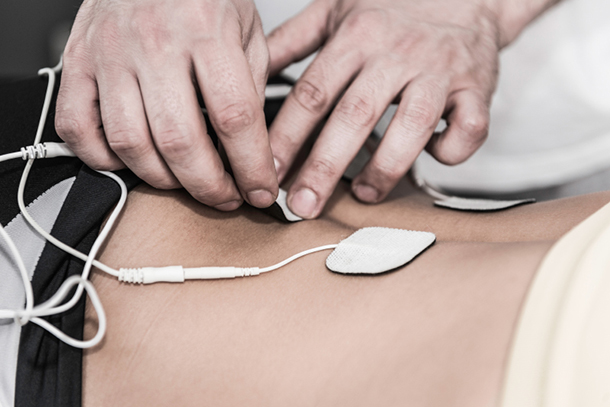Could electricity help stroke survivors regain control of their legs and return to mobility?
It’s a question that assistant professor James Finley, PhD, and professor Carolee Winstein, PhD, PT, both from the USC Division of Biokinesiology and Physical Therapy, part of the Herman Ostrow School of Dentistry of USC, hope to answer with a new study that could transform the way physical therapists help stroke survivors get back on their feet.
Finley and Winstein recently were awarded an Innovative Research Grant by the American Heart Association/American Stroke Association (AHA/ASA) to study the use of non-invasive electrical stimulation to improve stroke survivors’ walking ability.
The study, titled “TESLA-Stroke: Transcutaneous Electrical Stimulation for Locomotor Ability After Stroke,” builds upon a promising treatment modality called neuromodulation.
It is a treatment during which electrical or magnetic stimulation is applied outside the body to treat problems ranging from spinal cord injury to urinary incontinence to depression.
Finley’s research uses the treatment in a completely different way to treat stroke survivors, applying external non-invasive electrical stimulation directly to the spine, instead of the brain where it is most often used.
“What we’re saying is, ‘Sure the brain is important, but we don’t want to ignore the role of the spinal cord, particularly as it pertains to walking,’ ” Finley said.
If Finley’s proof-of-concept study is successful, it could offer physical therapists a promising new treatment to get survivors of stroke back on their feet.
According to the Centers for Disease Control, more than 795,000 people have a stroke in the United States each year — one every 40 seconds —with more than 600,000 surviving. Stroke is also the leading cause of serious long-term disability.
Finley’s study pairs the stroke rehabilitation expertise of the USC Division of Biokinesiology and Physical Therapy with spinal cord physiology expertise from the Edgerton Neuromuscular Research Laboratory. The lab, part of the University of California, Los Angeles, is led by V. Reggie Edgerton, PhD, who has been studying spinal cord physiology for more than 40 years.
Edgerton and his team have used electrical stimulation to treat patients with spinal cord injury. They have published a number of studies that demonstrate significant changes in lower extremity function as a result of spinal cord electrical stimulation, Finley said.
“We hope to be able to use electrical stimulation the same way in stroke survivors to actually show some short-term improvements in walking function or even control of the legs,” he added.
The study will be conducted in two phases. First, researchers will focus on asymmetry, determining which segments of the spinal cord, when stimulated, impact which muscle activity patterns in each leg.
Secondly, Finley’s team hopes to find optimal stimulation locations and combinations to help improve lower extremity function.
“If we could, for some subset of stroke survivors, actually improve their walking function beyond what is currently possible with standard techniques, we could imagine this becoming an actual intervention, Finley explained.”
Finley joined the division in 2013. He is the director of the Locomotor Control Laboratory and has devoted himself to better understand how locomotion is controlled and adapted in both healthy and injured neuromuscular systems.
The junior faculty member has two active grants and three completed grants, totaling nearly $900,000.
Winstein has been a professor at the division since 1990. She runs the Motor Behavior and Neurorehabilitation Lab, which is focused on motor control and learning.
The AHA/ASA grant aims to support high-risk, high reward research that could ultimately lead to critical discoveries or major advancements in the field of cardiovascular and stroke research, according to the AHA/ASA website.
— John Hobbs


